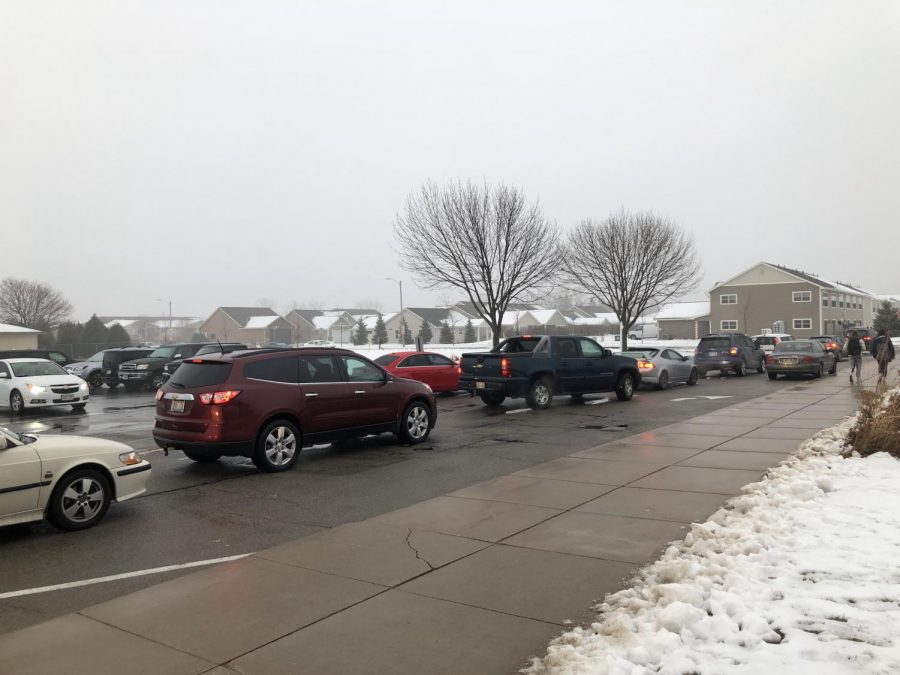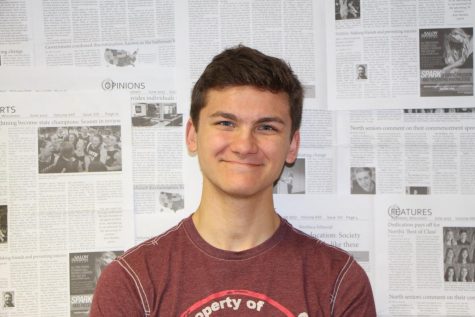Escaping the North parking gauntlet
December 13, 2018
A driver is selfish. With singular focus and ferocious tenacity, a driver approaches the road, and the unfortunate drivers they encounter, with a sense of enmity. With the wheel gripped by white knuckles, a driver will rush past others, cursing at them for their stupidity and lack of tact in driving while simultaneously patting themselves on the back for their apt decision to cross to the left lane when they did. Their desire revolves around their own self interests, their need to reach their destination, to park the car, to get to the next meeting, to arrive at work on time, to meet friends, to pick up their child, to drop off the package for their mom, to buy groceries before dinner.
A few weeks ago, I attempted to drive home from school. I had gotten into my car and was on the school road going out towards Ashbury Drive when I encountered an example of why people say “students should not drive.” Now, the general thought process of both students and parents trying to get out of the Appleton North parking lot is pretty one track: “Get me out.” This mindset manifests in a couple of ways, all of which wrestle with one another.
You have the students, with whom many are fully dedicated to the idea of escape from the institution they’ve been in for the past seven and a half hours. They rush in their cars from the lots, with an unspoken knowledge that if someone tries to leave from between 3:07 to 3:20, they will find an unforgiving group of teens more focused on what music they want to play than the cars around them, and gridlock worthy of the political climate found in Washington today.
Then, you have the parents and others who are the only way some students have to get home. These are the cars you can see on the pickup street on the Commons side of the school, clinging to the sides of the already narrow street like cholesterol on an artery––an understandable occurrence, as North is a large school and many underclassmen can’t drive yet. What has become an issue is those who park near the exit onto Ashbury. A temporary towing zone was placed here for about a week, and for the first day or two, it worked. The pickup parking had been restrained to the indicated areas, and all was well––or as well as it could be in a high school parking lot.
Then came day three.
Turns out tenacious soccer moms know an empty threat when they see one, and the area was once again full of cars. This brings us back to the incident on my way home from school going towards Ashbury. The right lane was filled with cars, and at first glance, I instinctually thought they were in the turning lane and the cars next to it must have been in the left turn lane. A far fetched thought to have in a school parking lot it turned out because the entirety of the right turn lane was not moving vehicles, but ones in park, waiting to pick up their “cargo.” That meant that the left turn lane was being used as a right turn lane. The cars in line had come to a slight rest for a moment, and as opposed to waiting, a car from the lot exit drove through the furthest lane. The only lane that remained unoccupied at the time, save some students crossing the street. The lane for oncoming traffic. While only a few moments had passed, it took a while for me to shake the picture of the car from my mind. The students seemed surprisingly unfazed, and there the car went, there the parents waited, and there the other cars hummed, once again in movement.
Herein lies the need for change. Dangerous drivers aside, the lack of attentiveness, lack of care, and lack of vision are what truly needs to be addressed. The constant movement of every individual’s lives creates a rush to keep up. Everyone needs to focus on their destination, their next meeting, their next work shift, their next stop. The problem is that the constant motion takes the world and zooms in on each driver’s next stop. It doesn’t matter what the person to their left is doing, only that the driver has work in a half hour and need to do x, y, and z beforehand. They forget to think about the people around them, and consequently endanger everyone around them, maintaining the aggression they approach these “obstacles” with.
A driver is selfish––but in a world with an endless to do list, it is not surprising. The constant motion, clamor, cycling––chaos, even––of today creates this selfishness, but it also creates the necessity of perspective. Take a step back from the white knuckled grip of the wheel, a look up from the Spotify playlist, and a look around at the people driving by. Everyone has things to do, but active aggression achieves nothing. A driver is selfish, but a driver can be selfless.
Or at the very least, aware…and in the correct lane.




Michael Kraft • Jan 15, 2019 at 8:45 am
North needs to stop these people from parking there it slows down the traffic down by a lot. Also north should get are police lean sons offer to start giving out tickets to people that park in the right hand turn lane to pick up there kids.